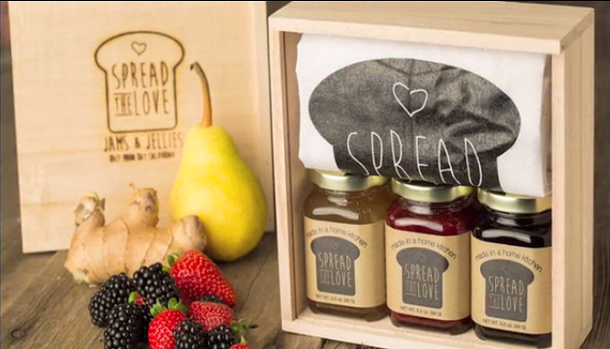Food service, retail distribution offer different strengths for growing a start-up

Marilyn Johnson, the woman behind the one-person jam and jelly operation, saw the choice between food service and retail distribution as a false dichotomy, opting instead to take advantage of the unique opportunities offered by each.
“When I first started the business, I wanted my jams and jellies at restaurants to replace the small packets of commercially made jams and jellies,” which are not organic and are packed with high fructose corn syrup, Johnson said.
When she approached a local restaurant and bed & breakfast near her hometown of Half Moon Bay, Calif., the owners jumped at the chance to serve her locally made jams and jellies and in doing so created a steady income on which Johnson could rely and plan around.
“The bed and breakfast goes through a set amount every other week. It is not a large quantity, but it is consistent. And the restaurant goes through an enormous amount … because they serve 500 breakfasts every weekend,” Johnson said.
This steady cash flow enabled Johnson to comfortably fund and strategically expand production. It also gave consumers a way to try the jams and jellies without Johnson footing the bill for demonstrations.
By also selling her jams and jellies in jars at the bed & breakfast consumers were able to make the connection between what they were eating with the brand – helping Spread The Love gain recognition.
A similar arrangement with the local Ritz Carlton also gave Spread The Love cache as a high-end organic product. Johnson was able to use the credibility the Ritz Carlton gave her jams to influence other retailers to carry her products in branded jars.
She now distributes her product at a well respected boutique in Half Moon Bay that is a destination for visitors and at the more traditional local grocery store chain – New Leaf Community Markets, Johnson said.
Johnson also occasionally sells her jams and jellies at local farmers markets, which provide a direct avenue for consumer marketing research, she said. By talking with shoppers at the market, Johnson said she has learned what flavors resonate with buyers and has gained ideas for new product development.
Distributing at farmers markets also allowed Johnson to build relationships with her consumers and create a loyal following, she said.
Kickstarting a larger, commercial business
By using all avenues available to build distribution, Johnson quickly outgrew her home kitchen, where she currently makes the jams with a Cottage Food Operators License.
“I can make 75 jars in one day, so that is six cases, which is not a whole lot,” Johnson said. While she has been able to keep up supply to meet demand, she note that moving to a more conventional kitchen where she can make larger batches more quickly would give her more leeway.
“I feel like a squirrel on a wheel” trying to keep up with demand, she said, noting that new equipment would help her make more at once.
But to grow costs more money than Johnson has, which is why she has launched a Kickstarter campaign. Her goal is to raises $23,000 by May 20 to cover the costs of moving into a commercial kitchen, the inspection fees, licensing, new labels, equipment and trademark protection, she said.
Johnson opted for Kickstarter rather than another crowd funding website because it is well known and trustworthy, she said. But like other food and beverage star-ups have noted, promoting the campaign is challenging.
Other companies have said that passive interested in food and beverage firms on Kickstarter is not as high as it is for technology and design firms on the website. Johnson confirmed this, adding that food and beverage firms might need to hire a promoter to spread the word about their campaigns.
That said, Facebook has been a vital tool for generating interest in the Kickstarter campaign, Johnson said, noting most contributions have come through the social media networking site. Johnson also is calling attention to the campaign by emailing vendors and people who have purchased her products online.
While fundraising is difficult, Johnson said it is worth it because she is pursuing her dream. She encouraged others also to “just go for it. Life is too short – do what you love!”
















